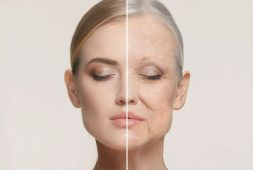
Modern man may have evolved into what they say a better developed creature. Still, scientists have been searching for connection between us and the Neanderthals, and they have found several. For instance, there are some out there who have constantly complained of back pain.
Why do some people suffer from back pain? The clue may be found in the past. Experts have examined the bones of our predecessors and have come across similarities in our bone structure. Studying them could very well answer several pertinent questions.
The Clue is in the Past
Neanderthals might hold some secrets and reveal some clues as to why modern man oftentimes suffers from lower back pain. This was according to a new study made by experts who have studied and compared the bones between Neanderthals and us.
The backbones they found reveal that that a lot of the pain suffered by man today is less from physical activity, bad posture, and the use of the wrong kind of furniture. Back pain can be traced after the turn of the industrial era, which was in the late 19th century. This was when most of the work went from agriculture and high-activity to simply sitting down on chairs for long periods of time.
Spine analysis was made and it previously assumed that our pre-modern day human ancestors had different spines because of evolution. However, researchers have examined the intact spines from across the centuries. They discovered that these essentially didn’t really change up until the death of the famous Queen Victoria.
The abstract of the study that was published in PNAS Nexus recently stated this, “Lumbar lordosis is a key adaptation to bipedal locomotion in the human lineage. Dorsoventral spinal curvatures enable the body’s center of mass to be positioned above the hip, knee, and ankle joints, and minimize the muscular effort required for postural control and locomotion. Previous studies have suggested that Neandertals had less lordotic (ventrally convex) lumbar columns than modern humans, which contributed to historical perceptions of postural and locomotor differences between the two groups. Quantifying lower back curvature in extinct hominins is entirely reliant upon bony correlates of overall lordosis, since the latter is significantly influenced by soft tissue structures (e.g. intervertebral discs).”
The Findings Made
Following the death of the beloved queen, the spine’s curvature changes. This is caused in part, by a ‘wedging’, of vertebrae and the intervertebral discs. This refers to the softer material that’s found between the vertebrae. ‘
In order to establish further connection, the researchers of the study looked into more than 300 spines of the pre-industrial and post-industrial of both male and female humans. They did so by looking at samples found from around the world. Generally, they saw that spines in post-industrial people showed more lumbar wedging than those in the pre-industrial age. Also, the spines of the Neanderthal were significantly different from those in post-industrial age, but not from pre-industrial era.
It should also be noted that the scientists who examined the bones found no differences connected to geography within the samples they have coming from the same era. Dr. Scott Williams, an Associate Professor at New York University, said, “Neanderthals are not distinct from modern humans in lumbar wedging and therefore likely possessed curved lower backs like we do. However, over time, specifically after the onset of industrialization in the late 19th century, we see increased wedging in the lower back bones of today’s humans—a change that may relate to higher instances of back pain, and other afflictions, in postindustrial societies.”
He also added, “A good part of this perspective derives from the wedging of Neanderthals’ lumbar, or lower, vertebrae—their spines in this region curve less than those of modern humans studied in the US or Europe. Past research has shown that higher rates of low back pain are associated with urban areas and especially in ‘enclosed workshop’ settings where employees maintain tedious and painful work postures, such as constantly sitting on stools in a forward leaning position.”
Dr. Williams then said, “A pre-industrial vs. post-industrial lifestyle is the important factor. Lower back curvature is made up of soft tissues (i.e., intervertebral discs), not just bones, so it cannot be ascertained that Neanderthals’ lumbar lordosis differed from modern humans. The bones are often all that is preserved in fossils, so it’s all we have to work with. Diminished physical activity levels, bad posture, and the use of furniture, among other changes in lifestyle that accompanied industrialization, resulted, over time, in inadequate soft tissue structures to support lumbar lordosis during development.”
The doctor also believes that “to compensate, our lower-back bones have taken on more wedging than our pre-industrial and Neanderthal predecessors, potentially contributing to the frequency of lower back pain we find in post-industrial societies.”



